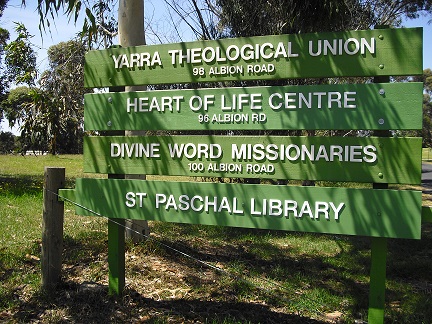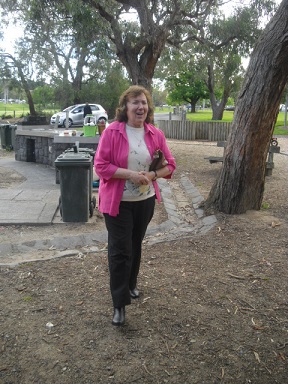Peter MALONE
A Tribute to the late Bishop Des Moore MSC. He would have been a bishops, 50 years on July 2nd
A Tribute to the late Bishop Des Moore MSC. He would have been a bishops, 50 years on July 2nd
Tribute by Joe Ensing, Tony Young and Russ Andersen, longtime MSC missionaries in Eastern Papua.
Courtesy of MSC Magazine

Bishop Sir Desmond Charles Moore msc KBE
“I think we lived in the best times, Tony.”
“You can be sure of that, Russ.”
Those times started for the two of us when we we studied at Croydon with Des for a short time. They were the heady days of Vatican II for the younger students. Des, who had come to Croydon after a spell of civvy life as a
banker preferred to trust the compass of his simpler faith that had served him well, and continued to do so throughout his life.
After serving his PNG missionary apprenticeship in Port Moresby, Des was
appointed P.P. of Boregaina in the Central Province and soon became also the MSC Superior. He was appointed Bishop of Sideia in Milne Bay Province in 1970.
Joe Ensing had already arrived at Sideia a short time before. Russ and myself had already been working in Milne Bay for some years. The three of us were there to welcome our new Bishop and friend from student days. For the next 31 years we worked under him in our island parishes. It was an experience we will never forget.
Bishop Des was a man without any pretensions to be anything else but himself. He respected the formalities demanded by his Office, but apart from that was content to be what he would have described as “a pretty ordinary bloke”. He could often be found on the wharf helping to load one of the mission boats, or organising the passengers and deck cargo with typical energy – sometimes to the
bemusement of the crew.
Often he would be out and about around Alotau – at one time on a motor scooter.
He could be found in the offices of business houses and stores, bringing with him always a breath of fresh air; people enjoyed his forthright views on everything from the price of roofing iron to how the country was being run.
Bishop Des was always a dedicated shepherd who cared personally for all his sheep – or “donkeys” as we would sometimes be called when we had
annoyed him more than usual. His house was always open to anyone in need or distress, and most left him helped or comforted. When he was home he was always available on the mission radio network for a yarn or to discuss any problems that arose in the far flung parishes of his
diocese. To quote Russ, “I have to say personally I have never met anyone so charitable and so witnessing to God’s love in his life-style.”
Most of all he will be remembered by us as a man who fostered freedom in our tiny corner of the Church. He was a man of definite opinions, but he had a remarkable tolerance for those who disagreed with him. He directed most matters and people with a light hand. He gave his young priests -such as we were then – plenty of rope in their ministry, but let us know very definitely when we had reached the end of it.
Again Russ, “Des trusted his priests while allowing us to be ourselves, warts and all! We, in turn, trusted him, allowing him to be himself. Such mutual trust engendered warm friendship and contributed to both sides giving of their best in MSC solidarity.”
To Des: you may not believe all this, Des, but that’s how we remember it. And now, when you have to bear with the inevitable limitations that age imposes, we pray with you that, in God’s good time, you will know the joy and the fullness of that blessing you gave to us, in the presence of him who is the Truth that sets us free.
By Russ, Joe, and Tony

Golden Jubilee of Episcopal Ordination of Desmond Moore
Born 12th May, 1926, Desmond Charles Moore, M.S.C. Ordained Priest of Missionaries of the Sacred Heart of Jesus Bishop Emeritus of Alotau-Sideia, Papua New Guinea.
For 41 years, Bishop Desmond Moore ministered to the people of Papua New Guinea. Now in retirement in Sydney, he still has a heart for the region.
Bishop Moore grew up in Adelaide, relocating to Sydney as a young man to become a Missionary of the Sacred Heart (MSC). He says it was his "desire to go to foreign missions", and the constant presence of MSCs throughout his childhood, that drew him to the order. "The only people I knew who did mission work were the priests," he says.
Despite having already completed his high school education, Desmond Charles Moore "hadn't done too much Latin". "I was there for three years doing school, then had a year in the novitiate, before I went to Croydon in Victoria. "When I was first ordained (as a priest of the Missionaries of the Sacred Heart of Jesus on July 27, 1957), I was posted back to Douglas Park as assistant to the novice master and the bursar of the monastery."
Bishop Moore held this role from 1958-1960, at the end of which he received his first overseas posting.
For his first 12 months in PNG, Des was based in Port Moresby where he worked with the bishop and the parish priest.
After two years, Fr Moore, who was then religious superior for the Missionaries of the Sacred Heart in Port Moresby, was posted to Milne Bay and, on March 7, 1970, was appointed bishop of the 20,000 sq km diocese of Sideia, succeeding the founding bishop of the diocese, Bishop Francis John Doyle MSC. "There I was for the next 31 years," Bishop Moore says.
In 1996 Bishop Moore was knighted for his work in Papua New Guinea. Ever humble, he accepted the award without fanfare, as a mere representative of the many religious and lay missionaries working in the region at the time.
"It was granted to me by the Queen; I don't know how that came about," he said.
His time in PNG gave Bishop Moore a greater understanding of the challenges faced by Australians who served in the Region during World War II.
Bishop Moore died, aged 94, on June 2nd 2020.

Month of June, last weekend, Images of the Sacred Heart
Month of June, last weekend, Images of the Sacred Heart

From Brazil
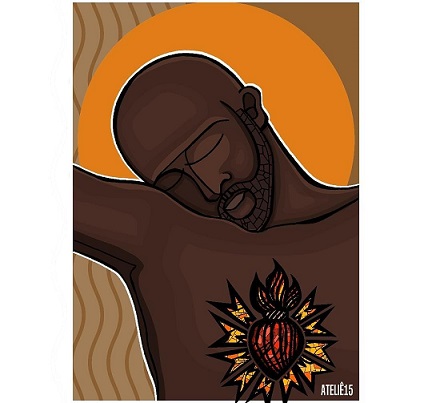
Archbishop Mark Coleridge, on the occasion of the Feast of the Sacred Heart, offered this Tweet.
Given how enduringly popular devotion to the Sacred Heart is and how rich its background and literature are, I’m always surprised by the lack of variety and artistic merit in the many depictions of the Sacred Heart I’ve seen. I wonder why...

A teacher posted a comment Tweet.
Have a chat to the MSC’s - we always disagree with such sentiments. We just had our Feast of the Sacred Heart and there is no end to Sacre Coeur art
From the Philippines
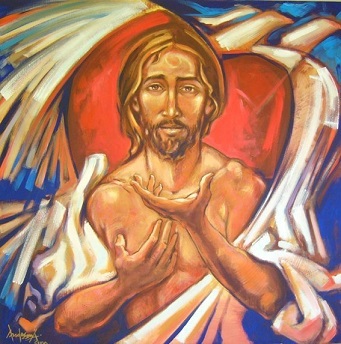
So, here is a range of different art Sacred Heart representations.
Black Jesus

Sacred Heart-Christ the King, India

Sacred Heart Pieta
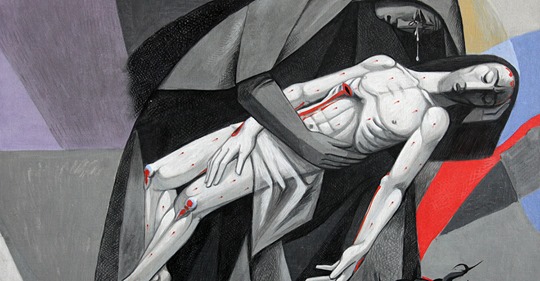
The Zoom Lectern, for Theology and Spirituality sessions
The Zoom Lectern, for Theology and Spirituality sessions

The less formal Zoom lectern, Philip Malone MSC at home with Moral Theology.
Schools have furnished programs for distant learning. Parishes have found ways to put Masses and ceremonies on line. The Chevalier Institute has hosted two webinars, most recently last Wednesday (available on the Province Facebook page). (The Provincial Council meetings are by Zoom.)
There have been reports around the world, around the Church, about seminary lectures on Zoom.
This has been the case with YTU, the Yarra Theological Union and the Heart of Life Centre for Pastoral and Spiritual Formation.
So, Philip Malone taught his Introduction to Moral Theology by Zoom. He also conducted special courses for the Graduate Certificate Teaching – Religious Education for a group centred in Ballarat but, again, by Zoom.
Our students, Kenji (who is doing courses for a Masters in Education) is a Zoom recipient. Also for Vincent and Anh with some Formation seminars and pastoral supervision.
Paul Castley is on the team for the Spiritual Leaders program at Heart of Life, again Zoom but also some supervision and direction on Facetime.
Peter Malone has just completed a course on Religious Experience for the Siloam program at Heart of Life, Zoom again.
There were hopes for face to face courses in the Second Semester but at this time of posting, this seems more difficult with the increasing number of infections in Melbourne. We can still hope.
_______________________________________________________

Sue Richardson, pbvm: Getting to know the MSCs
Sue Richardson, pbvm: Getting to know the MSCs
After almost four decades of ministry in Melbourne, Sue Richardson, well-known to many MSC, is returning to Lismore. Here, she remembers Siloam, Heart of Life work, and her being the Director of the Centre at two different periods. Latterly, she has been YTU Chaplain and Vicar for Religious for Melbourne Archdiocese.
My first encounter with an MSC was in the States way back in 1977. Walter Downs (RIP), was doing the same two week seminar as I was on the Ignatian Exercises – the 30 Day Retreat. He was a friend of Brian Gallagher, so told me to contact Brian when I returned to Australia and he would find retreat work for me.
It wasn’t too long after arriving home, that I contacted Brian and was introduced to Douglas Park and began my retreats ministry. Harvey Edmiston (RIP) Peter Hoy and John Flynn were also part of the MSC retreat team. It was at this time that I first met MSC Brothers who were responsible for the farm and looking after the domestic side of life at the retreat centre.
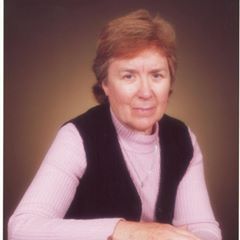
After several years giving retreats at the Park, I was sent to Melbourne to become the formator for the Presentation Sisters Central Noviciate programme at Sandringham, and then as formator for those preparing for final vows. At the same time, I was also involved in establishing with Brian Gallagher, the Siloam formation programme for spiritual directors. Initially this was at the MSC student formation house at Croydon, where I met and came to know more MSCs including Terry Naughton, Peter Malone and Paul Castley. Terry eventually moved to Douglas Park and joined their retreat team. It was during our time at Croydon that I also came to know many of the MSC students.
After a couple of years, Brian had the inspiration to establish the Heart of Life Spirituality Centre. Initially this was established at a former Josephite Boy’s Home in Surrey Hills and then at the Family Care Sisters former residence at Kew. Besides offering the formation programme for spiritual directors with Brian, we then established the Spiritual Leaders programme, plus reflective programmes on different aspects of spirituality. Siloam, being a fulltime programme, enabled people to attend from the different Australian States as well as from overseas countries. In the Spiritual Leaders programme, attendees were mostly pastoral associates, congregation leaders and parish priests.
When Brian was elected provincial I took over as director of Heart of Life for the next six years. I then decided to take a sabbatical year. This I did by walking the Camino, then spending time with the contemplative Sisters, where Julian of Norwich lived. The Medieval Mystics was one of my main topics for the seminars I offered at Heart of Life. I also attended some Summer Schools in Dublin, Ireland before returning home and taking up the leadership position of my congregation for the next five years.
Sue's second term as Director of Heart of Life was when it was situated at Box Hill
As leader, I held the office of vice-president of Catholic Religious Australia for three years and for five years I was a member of the Council for Clergy Life and Ministry, a council of the Australian Catholic Bishops Commission for Church Ministry. After completing my time as Religious Leader of the Lismore Presentations, I then took up again the directorship of Heart of Life for the next six years. During this time, I initiated the two year part time programme for spiritual directors, over and above the full time programme and Peter Curry joined the team as our receptionist.
The next two years I continued to see people for spiritual direction and pastoral supervision at Heart of Life and also studied for my MA. Significant for me was being in the same class as James Maher (RIP) and studying in Philip Malone’s classes. When I completed my term as director, the President of YTU, Chris Monaghan, offered me the position as Chaplain. This gave me another opportunity to meet and get to know the MSC students who were doing the English Second Language programme as well as those studying theology. I completed my time as Chaplain at the end of 2019. In late 1916, the archbishop of Melbourne, Denis Hart, offered me the of Vicar for Religious for the Melbourne archdiocese. This I held for the next three years.
All going well, I will be returning to Lismore when possible this year.
Sue Richardson pbvm, MA (Theol), AMusA, DipFormSpir, DipStudSpir, CertSD, DipTeach
Over 60? Midweek Memories
Over 60? Midweek Memories
What I learned from my parents!!! Laughter... good therapy (and maybe a help to over 60s still getting over being home schooled)!

Most of generation of 60+ were HOME SCHOOLED in many ways .
1. My mother taught me TO APPRECIATE A JOB WELL DONE .
"If you're going to kill each other, do it outside. I just finished cleaning"
2. My mother taught me RELIGION .
"You better pray that will come out of the carpet."
3. My father taught me about TIME TRAVEL .
"If you don't straighten up, I'm going to knock you into the middle of next week!"
4. My father taught me LOGIC .
" Because I said so, that's why ."
5. My mother taught me MORE LOGIC .
"If you fall out of that swing and break your neck, you're not going to the store with me."
6. My mother taught me FORESIGHT .
"Make sure you wear clean underwear, in case you're in an accident."

7. My father taught me IRONY .
"Keep crying, and I'll give you something to cry about." Mum said the same thing.
8. My mother taught me about the science of OSMOSIS .
"Shut your mouth and eat your supper."
9. My mother taught me about CONTORTIONISM .
"Just you look at that dirt on the back of your neck!"
10. My mother taught me about STAMINA
"You'll sit there until all that spinach is gone."
11. My mother taught me about WEATHER .
"This room of yours looks as if a tornado went through it."
12. My mother taught me about HYPOCRISY
"If I told you once, I've told you a million times, don't exaggerate!"

13. My father taught me the CIRCLE OF LIFE
"I brought you into this world, and I can take you out."
14. My mother taught me about BEHAVIOUR MODIFICATION .
"Stop acting like your father!"
15. My mother taught me about ENVY .
"There are millions of less fortunate children in this world who don't have wonderful parents like you do."
16. My mother taught me about ANTICIPATION .
"Just wait until we get home."
17. My mother taught me about RECEIVING .
"You are going to get it from your father when you get home!"
18. My mother taught me MEDICAL SCIENCE
"If you don't stop crossing your eyes, they are going to get stuck that way." Or they’ll stay like that if the wind changes.
19. My mother taught me ESP .
"Put your sweater on; don't you think I know when you are cold?"
20. My father taught me HUMOUR .
"When that lawn mower cuts off your toes, don't come running to me."
21. My mother taught me HOW TO BECOME AN ADULT .
"If you don't eat your vegetables, you'll never grow up."

22. My mother taught me GENETICS .
"You're just like your father."
23. My mother taught me about my ROOTS
"Shut that door behind you. Do you think you were born in a tent?"
24. My mother taught me WISDOM .
"When you get to be my age, you'll understand.
25. My father taught me about JUSTICE .
"One day you'll have kids, and I hope they turn out just like you!”

This should only be sent to the over 60 crowds because the younger ones would not believe we truly were told these "EXACT" words by our parents…
An Interview with Sister Sally Duigan OLSH (From South Australia to South Africa)
An Interview with Sister Sally Duigan OLSH (From South Australia to South Africa).
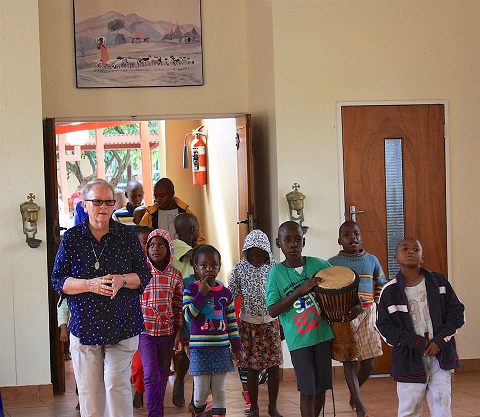
Sister Sally Duigan, who belongs to the Congregation of the Daughters of Our Lady of the Sacred Heart, is director of Holy Family Care Centre in Limpopo, South Africa. They provide residential care for orphans and vulnerable children.
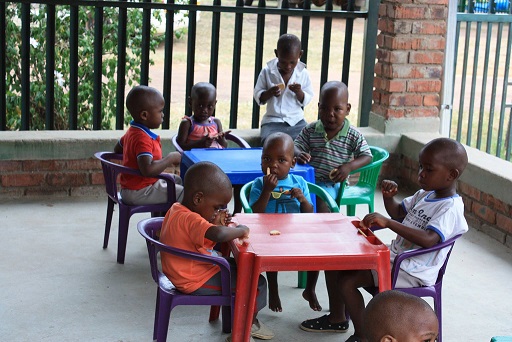
Where do you live?
I live in a remote part of Limpopo, South Africa at Holy Family Care Centre, Ofcolaco at the foot of the Drakensburg mountains. Here our community of Sisters, volunteers and local staff care for 82 children – many of them with chronic illnesses such as HIV/Aids, TB and other conditions. The children are mostly orphaned and all are vulnerable. We work closely with the Department of Social Development.
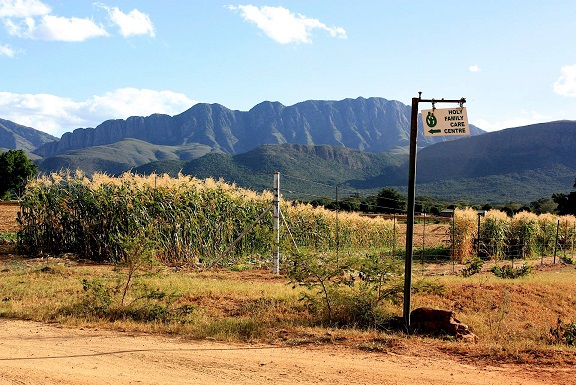
What’s the feeling like there at the moment?
President Cyril Ramaphosa addressed the nation a couple of weeks ago and from 1st June we moved from Stage 4 to Stage 3 Lockdown so things will begin to open up a little bit more. We are taking the advice we receive from the Government very seriously. We have been in lockdown now for over 10 weeks and an amazing and unexpected consequence for us is that the children are all healthy for now. People in the nearby villages are afraid to go out. There is a lot of fear because of the predictions that the infection rates will increase rapidly over the next few months. Images of field hospitals being established showing rows and rows of beds lined up appear on the News and this makes me feel anxious and I find myself saying “what if?”. I do try to remain positive and to keep hope alive in the midst of this uncertain time.

How have you had to adapt in your role at work?
Four weeks ago we realized we needed to adapt to our new reality and introduce homeschooling for 56 of our children from Grades R – 10. Normally the children go out to the nearby villages to school each day – so this is quite an adjustment for everybody. We have employed some young tertiary students, whose studies have been interrupted, to teach the children. We have created different classrooms and spaces for each grade. We have 18 children in creche aged between two and four years old and eight babies. In the afternoons there are organised sports activities, the older children play with the little ones outside in the sun and they have also been planting their own vegetable gardens – tomatoes, lettuce, spinach, onions, cabbage, lettuce, chillies and beetroot. They are very proud of their efforts.
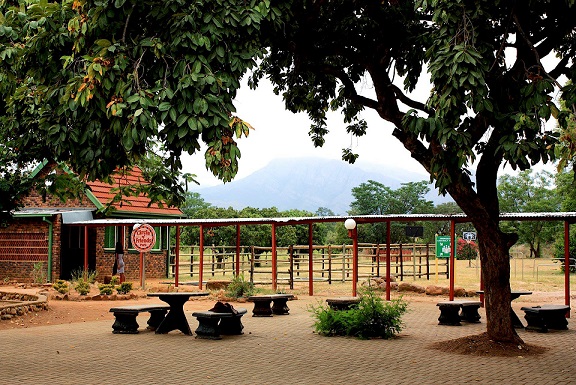
How have you been spending your time away from work?
Here there is no time away from work – with so many children living on the premises we never close down. Since Lockdown I haven’t been out at all. Fortunately, others in the community are willing to do our weekly shopping in the town of Tzaneen 50kms from here. Only three can travel in a car and they are often stopped on the way and checked by the police. We are classified as an essential service provider so there haven’t been any problems. I go walking around the property in the late afternoons and often think of the song: “You’ll never walk alone” as children join me.

I have a great big family back in SA – my own siblings, in-laws, nieces, nephews, plenty of cousins and friends – and I keep in contact with them when I can. I subscribe to The New Daily and InDaily so I keep up with the news. My sisters laugh at me and tell me I know more about what is happening in Australian than they do. Sometimes the WiFi here isn’t great but we keep in touch regularly. We use all different kinds of social media. I am usually surrounded by children who love to see who I am talking with and to greet them too. I can’t think of anywhere else in the world where I would rather be right now, than right here with these creative, resilient, beautiful children.
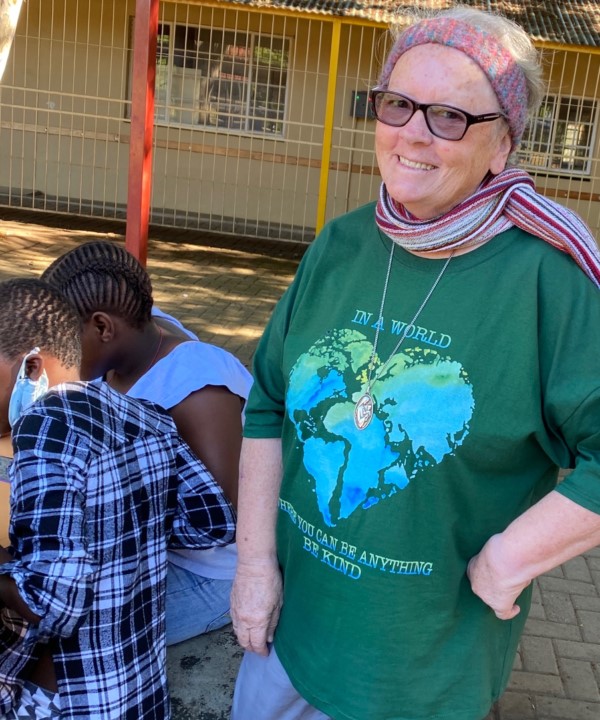
SALIFE - The best of Adelaide and South Australia
Photos, Funeral of Bishop Des Moore, for the record.
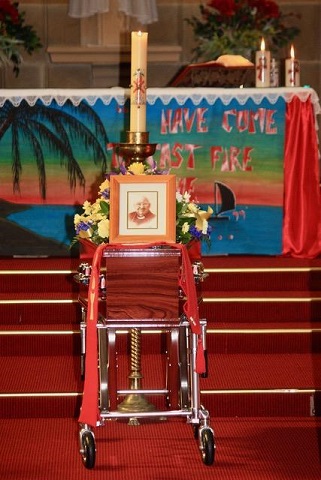
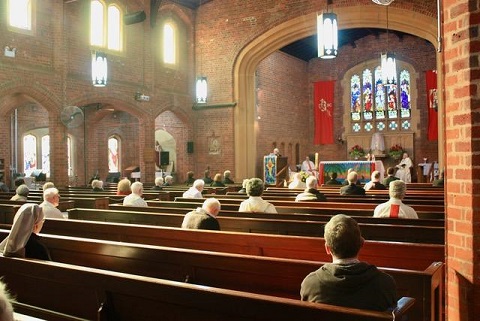
Presence at the funeral was limited to 50.
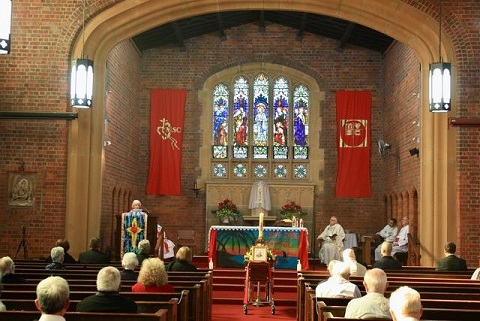
It was held at Our Lady of the Rosary Church, Kensington, Chris McPhee presiding,
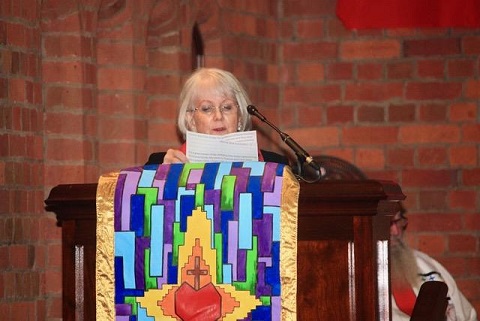
Roger Purcell delivering the homily, Des Moore’s niece speaking a eulogy.
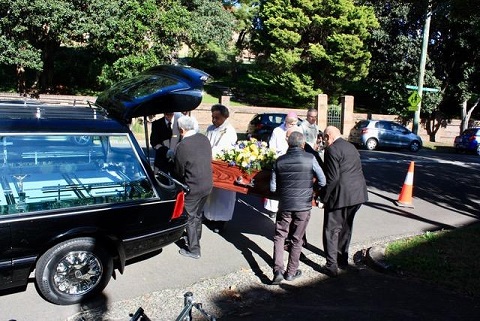
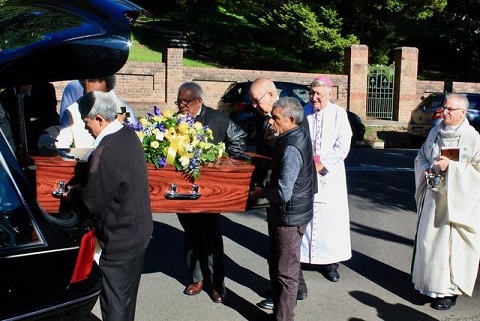
The film of the Requiem can be found on the Australian Province Facebook page.
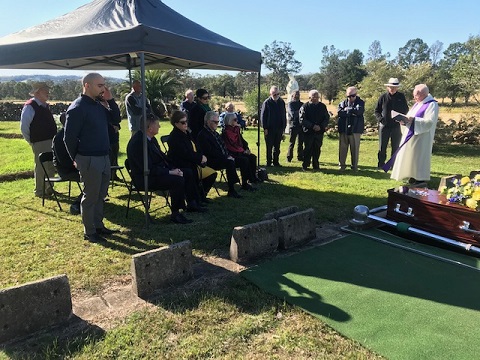
The Funeral was at St Mary’s Towers, Douglas Park, Tony Arthur officiating at the graveside.
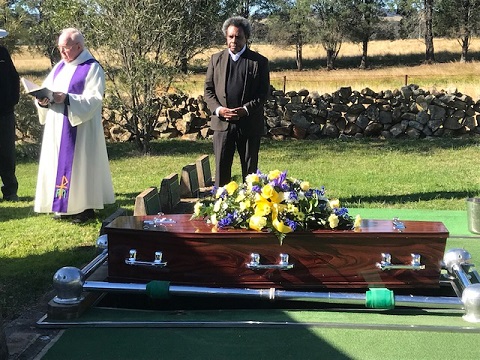
With thanks for photos: John Walker, Kensington; Roy O’Neill, Douglas Park.
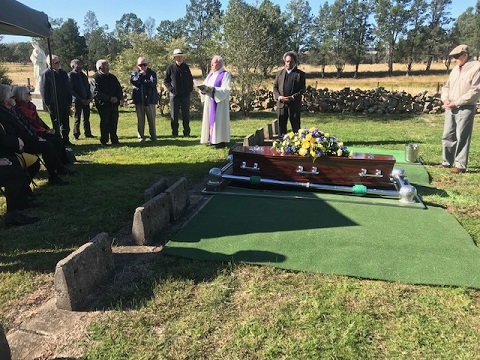
New Archbishop of Rabaul, Rochus Tatamai MSC
New Archbishop of Rabaul, Rochus Tatamai MSC

The Apostolic Nunciature in Papua New Guinea informs that His Holiness, Pope Francis, has accepted the resignation presented to him by His Grace Most Reverend Francesco PANFILO, SDB, from the pastoral governance of the Archdiocese of Rabaul for having reached the age limit.
The Holy Father has appointed Archbishop of Rabaul His Excellency Most Reverend Rochus TATAMAI, MSC, until now Bishop of the Diocese of Kavieng.
Congratulations to Most Reverend Rochus Tatamai msc.
There is a long MSC tradition of bishops in Rabaul
- Apostolic Vicars of Rabaul
- Louis Couppé, M.S.C. (see below 1922.11.14 – retired 1923), on emeritate promoted as Titular Archbishop of Hierapolis (1925.12.18 – 1926.07.20)
- Gerard Vesters (Gerardo Vesters), M.S.C. (1923.02.16 – 1938), Titular Bishop of Diocletianopolis in Palæstina (1923.02.16 – death 1954.08.30); previously Prefect Apostolic of Celebes (Indonesia) (1919.12 – 1923.02.16)
- Leo Isidore Scharmach, M.S.C. (1939.06.13 – 1963), Titular Bishop of Mostene (1939.06.13 – 1964.11.26)
- Johannes Höhne, M.S.C. (1963.03.01 – 1966.11.15 see below), Titular Bishop of Urima (1963.03.01 – 1966.11.15)
- Metropolitan Archbishops of Rabaul
- Johannes Höhne, M.S.C. (1966.11.15 – death 1978.05.27)
- Albert-Leo Bundervoet, M.S.C. (1980.03.06 – 1989.03.29)
- Karl Hesse, M.S.C. (1990.07.07 – 2011.08.11), also President of Bishops’ Conference of Papua New Guinea and Soloman Islands (1994 – 1996), Apostolic Administrator sede plena of Bougainville (Papua New Guinea) (1995 – 1996.09.12), again Apostolic Administrator of Bougainville (1996.09.12 – 1999.04.19), President of Bishops’ Conference of Papua New Guinea and Soloman Islands (2002 – 2005); previously Titular Bishop of Naratcata (1978.04.27 – 1980.10.24) & Auxiliary Bishop of Rabaul (1978.04.27 – 1980.10.24), Bishop of Kavieng (Papua New Guinea) (1980.10.24 – 1990.07.07)
- Francesco Panfilo, Salesians (S.D.B.) (2011.08.11 – 2020.06.19), previously Bishop of Alotau–Sideia (Papua New Guinea) (2001.06.25 – 2010.03.18), President of Bishops’ Conference of Papua New Guinea and Soloman Islands (2008.04 – 2011.05), Coadjutor Archbishop of Rabaul (2010.03.18 – 2011.08.11)
Feast of the Sacred Heart, MSC Melbourne celebration.
Feast of the Sacred Heart, MSC Melbourne celebration.
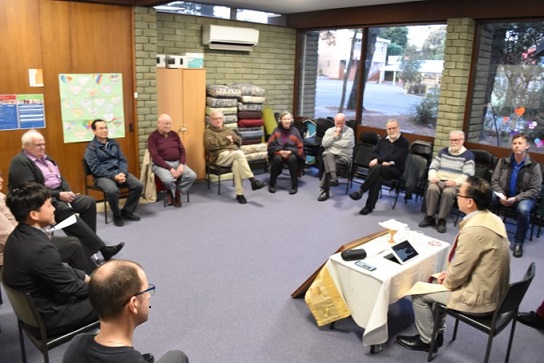
We gathered at Blackburn, celebrated a Eucharist in the crying room at St Thomas’s Church, social distancing, with Khoi as a Eucharistic celebrant, with Robyn Reynolds OLSH continuing our tradition of having a social justice reflection in our celebration. We were joined by our friends, Susan Richardson, PBVM, Margaret O’Loughlin, Madeleine Barlow RNDM. And we adjourned to Cuskelly house for hospitality.
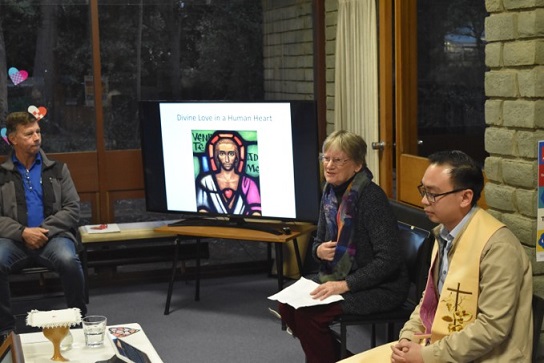
Here are some of the reflections in Robyn’s presentation.
In front of the altar, the faceless warrior, the faceless Jesus, for all the faceless people and peoples.
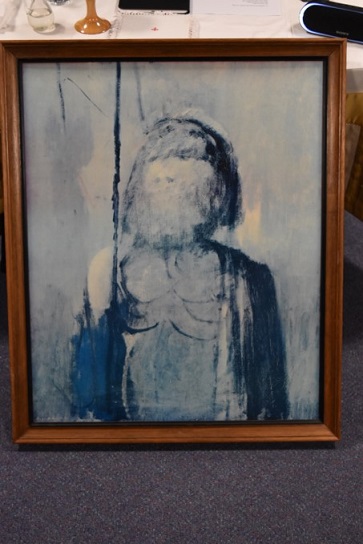
Perhaps we can consider reclaiming, re-naming, and re-imagining the call to ‘reparation’ which is still very much integral to a spirituality of the Heart of Jesus. Father Chevalier himself uses the term “restoration”. The spirituality of the heart is, according to Chevalier, “essentially social, restoring all things”.

In this year 2020, a spirituality of reparation or restoring can be re-enlivened for our suffering, vulnerable world and for our whole human family. Australian needs healing. As does our world. As does our earth. Covid-19 has invaded our bodies, but our planet, and our human spirits are also being invaded. Chevalier named the diseases of his time in such terms as he irreligiosity, and indifference. Exactly like some of the dark holes we can find ourselves in today.
Sherry Balcombe, leader of the Aboriginal Catholic Ministry in Melbourne, recognises the same failures, longs for the same healing. The sense of the sacred is so remote, and the irreligiosity of which Chevalier spoke. She too struggles to find in mainstream Australia much awareness of the sacredness of life, of the dignity of persons. Along with the indifference, “who cares?”.

Ken Haring
She notes: “I long to see a new Australia that prides itself on the treatment of First Nations Peoples, that reveres the cultural heritage of this land, where every child who goes to school learns about the First Nations people as the guardians and protectors of Mother Earth.”
Over 2000 years ago, Jesus saw his sacred place, the Temple in Jerusalem, his heart place, being abused and desecrated, not being recognised for what it was, being made invisible… His anger boiled over. He became violent. He cried out, naming and shaming the wrongdoers. Sacred places matter. Human dignity matters, and, yes, like all lives, black lives matter…
Pope Francis has said: “seek a solution with love”. For us, the shape of that restoring, healing love will include a certain amount of pulling down, stripping away of an unjust, selfish and indifferent culture that has become systemic and acceptable in our country and in our lives.

Father Chevalier, with his universal and inclusive charism, was ahead of his times, his spirituality related to the whole Earth, the universe, everywhere in fact. Is there a more beautiful quote we can find from him when he says: “the love of God descending to the whole of creation, and the love of the whole creation rising to God, meet in the Heart of Jesus.”
And we see the human heart of Christ, bleeding, pierced, rejected, scorned, even perhaps pleading, “I can’t breathe”.
We trust in the compassionate heart of our loving God and, simply, we respect and are kind to each other.

_______________________________________________________________________________

A Reflection for the Feast of the Sacred Heart – fresh meaning for ‘Reparation’.
A Reflection for the Feast of the Sacred Heart – fresh meaning for ‘Reparation’
Gerardine Doherty OLSH

We used the word ‘reparation’ in a sense of penance and mortification. How can it be understood more challengingly now?
Jules Chevalier was intensely aware of the “evils of his time” and he urgently desired to restore to those wounded by such “evils” their rightful dignity, the truth of their personal value and worth. He longed to “repair” the “image of God” where he saw it had been damaged, mutilated, de-reverenced. His desires seem very much in keeping with what is stated in the Apostolic Exhortation on Consecrated Life: “The quest for divine beauty impels consecrated persons to care for the deformed image of God on the faces of their brothers and sisters, faces disfigured by hunger, faces disillusioned by political promises, faces humiliated by seeing their culture despised, faces frightened by constant and indiscriminate violence, the anguished faces of minors, the hurt and humiliated faces of women, the tired faces of migrants who are not given a warm welcome, the faces of the elderly who are without even the minimum condition for a dignified life.”
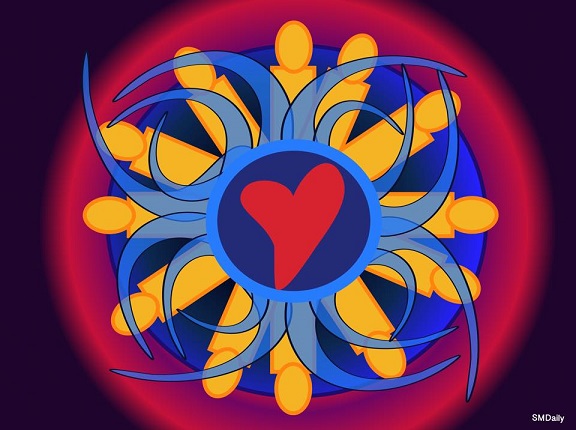
Underneath all of the above realities lurk severe injustices that need to be uncovered and “re-created.” I believe that one aspect of reparation that perhaps we too readily overlook is one that Jules consciously lived. He was critically aware of what was right and wrong in his own life and attitudes, in his society and in specific situations. He imagined a world that could be quite different: “I see a new world emerging…” He was convinced that the world he knew was not the best, nor the world that God intended, but a badly broken and distorted one which needed to be restored, and therefore could be immeasurably better and happier than the one he knows.

To live reparation today, I believe, is an invitation to imagine the world and one’s place in it as quite different from the existing order. To live reparation has something to do with grieving over what has already been lost and the possibilities that have never actually been realized. To live reparation is to feel in one’s own heart the enormous tension contained in the paradoxical truth, “Redemption is complete but not yet finished.”

I believe that the quality of our reparation would be considerably enriched if we constantly made the effort to examine, not only from the economical, ecological, and political viewpoints but also from the theological stance, the grassroots of the evils of our day. This I think would empower us to act with greater creativity, effectiveness, and awareness of the real anxieties and urgent needs in today’s world.


